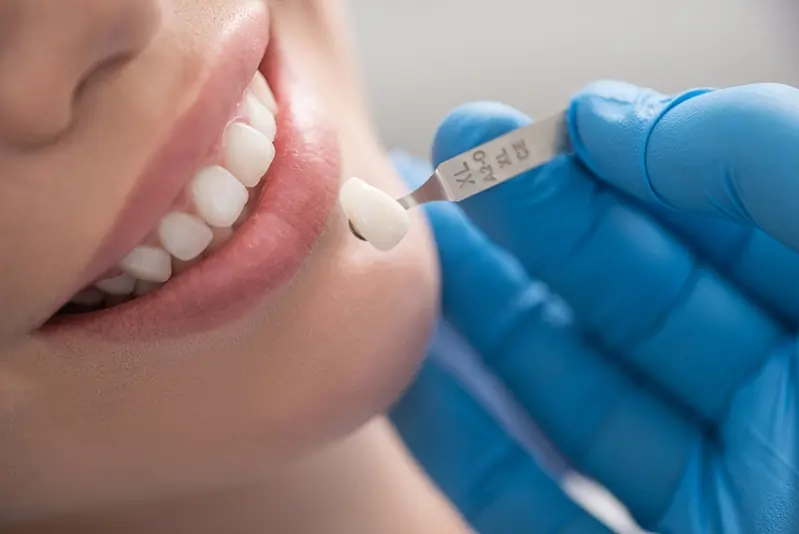Porcelain is a specific type of ceramic that is commonly used for dental crowns. When anyone refers to a ceramic crown, the material in question is almost definitely porcelain.
So why do some people claim there is a difference between ceramic and porcelain crowns? It's likely they're using "porcelain" as short-hand for "porcelain-fused-to-metal" (PFM).
Let's examine the key differences between ceramic and porcelain crowns.
What is a ceramic crown?
An all-ceramic crown is usually made entirely from porcelain or another type of ceramic. As with all materials, the crown sits over a filed-down tooth to restore its appearance, shape or structure.
All-ceramic is a very popular option for those who prioritise appearance, or for your front teeth, as it generally looks the closest to a natural tooth. You might also prefer an all-ceramic crown if you suffer from any metal allergies.
Another key benefit of all-ceramic crowns is the heightened resistance to temperature changes. Think of a porcelain bowl, for example – it takes much longer to heat than a metal pan. This means all-ceramic crowns can significantly mitigate temperature sensitivity you might otherwise experience.
It's worth nothing that all-ceramic crowns are not the strongest option, however. Though still tough, it's one of the more brittle options, especially compared to metals. An all-ceramic crown may also be more likely to cause greater wear on opposing teeth, particularly if you grind them.

What is a porcelain-fused-to-metal crown?
A PFM crown has much of the aesthetic appeal of all-ceramic, but with heightened durability. The interior of the crown – the part which encompasses the original tooth – contains a small metal thimble, which is then covered by a visually pleasing porcelain exterior.
With the base being made of metal, you can generally enjoy more structural integrity and a decreased risk of fracture. Meanwhile, the porcelain cover keeps the tooth looking natural and attractive.
That said, PFM crowns may not always look as convincing as all-ceramic. Some people may find they can see the metal thimble through the porcelain, or around the edges of the tooth. If your gums recede, it's possible the metal will create dark lines around your tooth.
Which crown material is right for you?
The dental crown material you choose should be based on your priorities and the role of the tooth.
The material you choose for your dental crown should be based on a number of factors such as your priorities and the role of the tooth.
All-ceramic crowns are often the preferred choice for front teeth (eg. incisors and canines) because they are more reliably attractive. These teeth may also wear less compared to molars due to their function. That said, if you regularly engage in sports or other activities where you're likely to take a blow to the face, all-ceramic crowns are more likely to fracture than other more durable options.
PFM crowns may be your first choice if you need the extra support but don't want to have a metal smile. These are a popular option as they allow people to feel secure in the longevity of their crown as well as the appearance.
Metal crowns are another option not yet discussed in this article. If you need a crown on a molar, metal is usually the best option. Most commonly made of gold, metal crowns are highly durable so they're great for withstanding the chewing action of your back teeth – and they won't be seen by anyone but you and your dentist. Gold is also rarely reacted to, so it's unlikely to trigger allergies for patients.
To discuss dental crown options for yourself or a loved one, schedule an appointment online or call City Dentists on 04 978 4964 today.
